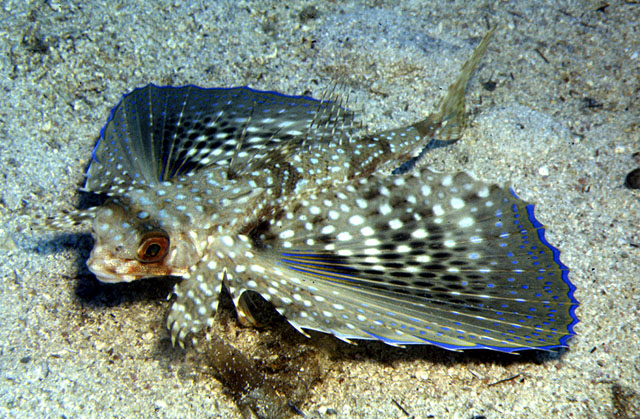| Dactylopteridae (Flying gurnards) |
| 50 cm SL (male/unsexed); max.weight: 1,810.0 g |
|
reef-associated; brackish; marine; depth range 1 - 100 m |
| Eastern Atlantic: English Channel to Angola, including the Mediterranean, Madeira, and the Azores. Western Atlantic: Canada (Ref. 5951) to Massachusetts, USA and the Gulf of Mexico to Argentina. |
|
Dorsal spines (total): 7-7; Dorsal soft rays (total): 8-8; Anal spines: 0-0; Anal soft rays: 6-6. Pectoral fin very large and fan-like, with front 6 rays separated as small lobe (Ref. 26938). |
| Found on sand, mud or over rocks in sandy areas, exploring the bottom with the free part of the pectoral fins (Ref. 6544). Feeds primarily on benthic crustaceans, especially crabs, clams and small fishes. Neither anterolateral glandural groove nor venom gland is present (Ref. 57406). |
|
Least Concern (LC); Date assessed: 29 January 2013 Ref. (130435)
|
| harmless |
Source and more info: www.fishbase.org. For personal, classroom, and other internal use only. Not for publication.

